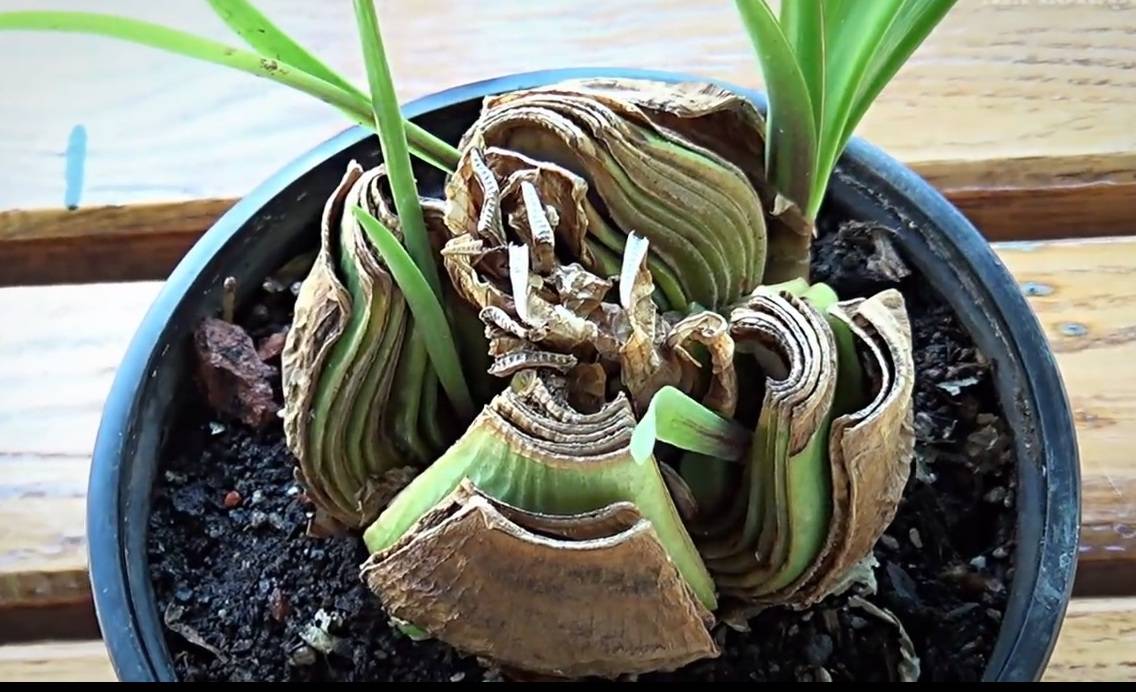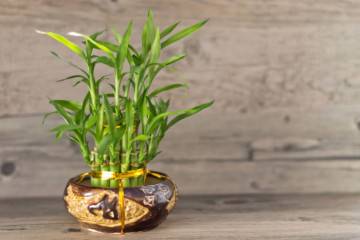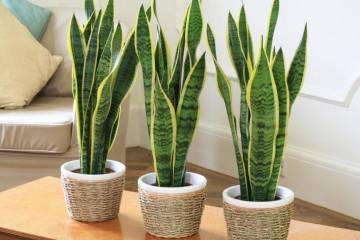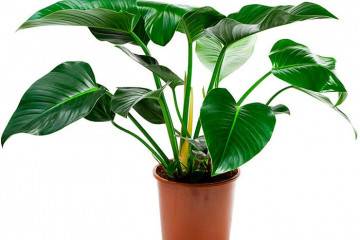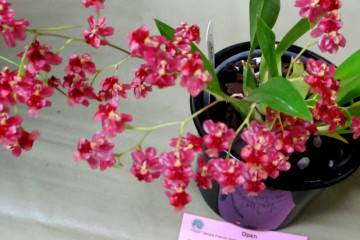Amaryllis flower - decorative varieties
Content:
Amaryllis is a flower with bright large buds sitting on a tall leafless stem. In the wild, it is found in South Africa and Australia. It is often called belladonna lily, jersey lily, naked lady, amarillo and march lily.
Amaryllis - what are these bulbous flowers
Amaryllid flowers are native to South Africa. In the hot African climate, they come to life only twice a year: in February and August, during the period of heavy rains. Until this time, they are in hibernation. During heavy rains, the earth is filled with moisture and dry roots begin to revive. After heavy rains, the heat sets in. The inflorescence, leaves and stems die, the root dries up until the next rainy season.
A brief description of what it looks like, distinctive features
Amaryllis is a perennial bulbous plant. A description of a flower can begin with its root system. It is a rounded bulb, slightly elongated at the edges. The tuber is about 5 centimeters in diameter. Thin roots protrude from the bottom.
The leaves are narrow, deep green in color. They grow up to 55 centimeters. The shape resembles a thin sword, up to 3 centimeters in diameter. They are located on the stem in pairs. In the natural environment during flowering, leaves are absent. In a room lily, there are leaves, but in small quantities.
On long peduncles, from 4 to 6 flowers grow, which are collected in an umbrella inflorescence. The diameter of one flower is up to 12 centimeters. The bud is shaped like a bell with six petals. They can be of various colors (white, cream, orange, pink, red) in the middle there are long stamens. The last week of April and early May are the time when amaryllis blooms. Flowering lasts about two weeks.
It is rare to see a real amaryllis on the windowsills in Russian apartments; it is often replaced by its relative hippeastrum. This is due to the fact that gippeastrum gets used to the Russian climate faster. Hippeastrum is a flower with leaves, like amaryllis, so it is easy to confuse them. The difference can be seen in the color of the bud, it is brighter in the hippeastrum.
Ornamental flower varieties (names with descriptions)
There are several varieties of flowers that can be grown at home:
- Durban (Amaryllis Durban). The variety is represented by bright red, double buds. The petals are long, pointed with white floors inside.
- Nymph (Amaryllis Nymph). The petals are white with pink veins. The buds in their structure resemble a peony. Will grow up to 45 centimeters, resembles a lush ball with a lot of petals.
- Parker (Amaryllis Parker). The petals are pale pink with a yellow center.
- The Snow Queen. Amaryllis white is distinguished by snow-white, wavy petals, on which there is a glossy coating.
- Double dream. Terry petals of a coral shade with a white border around the edge. They resemble the nymph variety.
- Ferrari. Amaryllis buds are red, stem height is about 60 centimeters.
- Macarena (Amaryllis Macarena).Terry red petals with white stripes give the flower a unique charm.
How to grow amaryllis from seeds at home
Amaryllis is a thermophilic plant and prefers a warm climate. In this regard, the flower is often grown in a pot; it can be grown in the open field near the house (if the climate permits).
Amaryllis home care includes:
- soil preparation;
- ensuring the temperature regime;
- lighting;
- regular watering;
- top dressing.
Planting rules, how to pick up the soil
To grow and care for an amaryllis flower at home, you need to choose the right place. The location of the pot depends on the specific stage of flower development:
- During the period of active growth, a flowerpot with a flower is placed on the southeast or southwest windowsill. It can be placed on the south window, but during the active solstice, the plant must be shaded. If this is not done, the shower will start to burn out.
- During dormancy, it is advisable to keep the plant in a cool, darkened room.
To grow a May lily from seeds, you need to choose the right planting material. The seeds can be purchased from the store or collected by yourself.
14 days after pollination, a seed pod is formed on the flower, inside which there are 60 to 80 seeds. The collection of planting material is carried out after the appearance of a crack on the box. Before planting, the peel is removed from the seed.
For planting, you can take any container. The seeds are sown, not too close, so that they do not interfere with each other during the growth process. For growing a flower from seeds, leafy and turfy soil is suitable. Humus can be added as fertilizer. A small depression is made in the soil, where the seeds are placed, and soils are sprinkled on top.
Temperature and lighting
It is necessary to germinate seeds at a temperature of 24 -26 degrees Celsius. The lighting in the house where the seed container is located should be bright and diffused. After the shoots appear, the pot must be turned towards the glass. This is necessary so that all plants are evenly lit. When the flowers get stronger and grow up, they are transplanted into separate flowerpots.
Watering and humidity
Water the plant two or three times a week. It is necessary to pour water exclusively into the sump. With this method of watering, the bulb remains dry, if it gets wet, it will begin to rot. During flowering, amaryllis flowers are not watered. Do not moisturize the soil when the flower is just beginning to rest.
How to plant amaryllis with a bulb
The bulb can be planted both in spring and autumn. The flowerpot should be deep and not wide. The bulbs have very long roots and need a lot of space. A drainage layer of expanded clay or pebbles is placed at the bottom of the pot, it will not allow water to linger in the roots. For planting, you can take a mixture of peat, leafy, sod land or use a ready-made substrate.
Step-by-step instructions for planting and caring for amaryllis:
- The bulb is carefully examined, the rotten roots are cut off.
- The rhizome is placed in a container with potassium permanganate.
- The bulb is carefully placed in the soil by 2/3, leaving 1/3 of the tuber on the surface.
- Water is poured into the pan.
- If necessary, watered with liquid fertilizers.
How to transplant amaryllis into a pot
For proper care, amaryllis needs a transplant. During the flowering period, the tuber takes all the nutrients from the soil. Therefore, once a year, it is necessary to transplant the flower to a new place.
The transplant is carried out in the spring, after all the buds have faded. This requires:
- After the completion of the flowering process, it is necessary to cut the flower stalks.
- The bulb is removed from the pot.
- The rhizome is carefully examined. When rot is detected, the roots are cut off.
- If there are babies on the tuber, they can be separated and transplanted into separate pots.
- The nutrient mixture is poured into a pot up to 30 centimeters deep.
- An onion is placed in the soil and covered with earth.
- The soil is compacted.
Upon completion, the flower pot is placed on the windowsill.
How amaryllis reproduces
May lily reproduces in three ways: by seed, by dividing the bulb and by children. For reproduction by division, you must choose the healthiest bulb. Make 4 cuts on it, without bringing the knife to the end. Treat the sections with activated carbon. The tuber is placed in a pot and germinated at a temperature of 25 -27 degrees. When the second leaf appears on the plant, the flower is transplanted into a new flowerpot.
Reproduction by children is the easiest method. Children do not need a rest period, they are immediately planted in the soil. After planting, the plant is watered abundantly and fertilized. Rest is organized after the end of flowering.
Problems associated with growing a plant
Often, when carrying a flower, it happens that it does not bloom. There is no flowering for the following reasons:
- Too large a pot, instead of forming buds, children grow around the rhizome.
- If the tuber is very deeply planted in the soil.
- Not enough useful items.
- The plant does not receive enough light and heat.
- Rotting of the root system.
- The bulb is infected with fungi and parasites.
Diseases and pests
With improper care, the plant can be infected with the following diseases:
- Stagonosporosis. Leaves, stem and rhizome are covered with red spots. The disease develops against the background of a sharp drop in temperature and high humidity. If a disease is detected, the bulb must be placed in a solution of potassium permanganate for two hours, then cut off the affected areas.
- Gray rot. Gray spots appear on the leaves. The leaf dries, then falls off. The reason is the wrong watering regime and an excess of moisture. Use fungicides.
- Fusarium. Leaves turn yellow and wither. This is due to the appearance of fungus on the bulb and temperature changes.
- Anthracnose. It is manifested by the appearance of dark spots and brown smudges on the leaves. The plant is treated with Fundazol or Fitosporin and transplanted into a new soil.
Among the pests that attack the flower, one can distinguish:
- Spider mite. Leaves and stems are covered with thin cobwebs. The parasite sucks the sap from the plant, it dies. You can get rid of the pest with Floromite or Neoron.
- Thrips. Small black dots can be observed on the sheet. The plant must be treated with Agravertine and Fitoverm. Then transplanted into a sterile pot.
- Aphid. Yellow spots appear on the deciduous blade. You can get rid of aphids with soapy water.
Amaryllis is an excellent indoor plant that can be grown outdoors. In order for a flower to please with lush buds, it is necessary to properly care for it. In amaryllis, the breeding process is quite simple, which even an amateur florist can handle.




